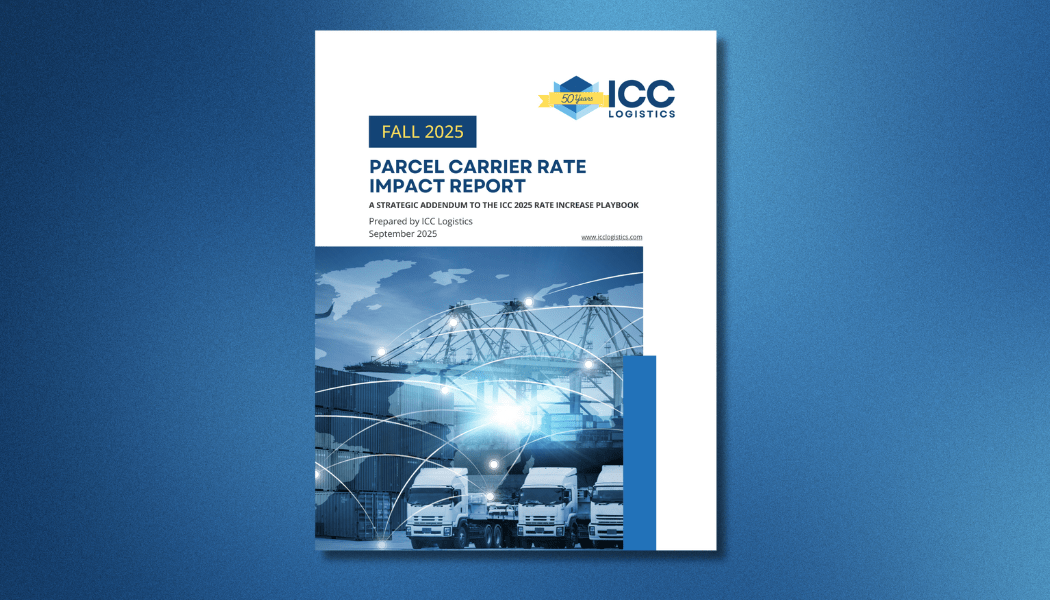Spring 2025 Reality Check for SMB Shippers
Recently published in Logistics Strategies on Substack
UPS just closed out its Q1 earnings call, and the tone wasn’t just cautious, it was uncertain.
When a carrier like UPS openly admits it’s planning for everything from worst-case to best-case scenarios, shippers should take note.
From an aggressive pullback on Amazon volume to a triple-threat tariff impact on SMBs, UPS is signaling a clear shift in how it’s navigating 2025. And the ripple effects are already hitting your logistics costs, your supplier relationships and your ability to stay profitable in a volatile environment.
This breakdown covers what’s really going on behind the headlines and what it means for shippers trying to stay ahead.
UPS’s Strategic Shift: Reducing Amazon Dependence
UPS announced plans to cut 20,000 jobs and close 73 facilities by June 2025, aiming to save $3.5 billion this year. This move is part of a broader strategy to reduce reliance on Amazon, its largest customer, by over 50% by mid-2026. Despite Amazon accounting for nearly 12% of UPS’s revenue, the company is pivoting towards higher-margin business segments.
UPS’s rapid pullback from Amazon — closing 73 facilities and cutting 20,000 jobs — isn’t just a financial reset. It’s a strategic pivot toward higher-margin business and a signal that the “Amazon era” of logistics is shifting.
This move puts pressure on UPS to extract more value from its remaining customer base, and raises questions about what service, pricing, and prioritization will look like going forward for mid-sized and smaller shippers.
As UPS reshapes its portfolio, businesses need to reassess their own carrier strategies, and understand how those changes may ripple through their rates, treatment of tiers, and contract leverage.
Staying aligned with a carrier’s evolving priorities may determine how resilient your operation is in the months ahead.
Tariffs: The Triple Threat to SMBs
The introduction of a 145% tariff on Chinese goods, effective May 2, 2025, presents a significant challenge. SMBs who often single-source from China, are particularly vulnerable. Unlike larger companies, they lack the capital to diversify suppliers or stockpile inventory ahead of tariff implementations. This situation is exacerbated by the fact that SMBs now represent 31.2% of UPS’s U.S. volume, the highest in a decade.
Given the current trade climate, it’s crucial for businesses to stay informed and adapt their strategies accordingly.
The Domino Effect: Network Reconfiguration
UPS’s restructuring isn’t just about cost-cutting; it’s a response to shifting market dynamics. The company plans to close 164 operations and reduce 25 million operating hours, focusing on automation and smarter facilities. This reconfiguration aims to align capacity with evolving demand patterns and ensuring agility in a continuing volatile market.
The decision to shutter 164 operations and remove 25 million operating hours is more than cost-cutting, it’s a full-scale reconfiguration of the UPS network.
As facilities close and routes consolidate, the impacts will be felt in last-mile delivery times, zone assignments, fuel surcharges, and overall shipping reliability.
For shippers, this is a wake-up call to model how fewer facilities and shifting density zones could affect delivery speed and cost. Distribution strategy, packaging criteria, and even warehouse locations should be re-evaluated in light of a leaner, more centralized UPS footprint.
Implications for SMB Shippers
For SMBs, these developments underscore the importance of proactive planning:
- Contract Audits: Regularly review carrier agreements to identify cost-saving opportunities.
- Diversify Carriers: Avoid over-reliance on a single carrier to mitigate risks associated with service changes.
- Scenario Planning: Develop contingency plans for various scenarios, including tariff hikes and service disruptions.
- Leverage Expertise: Consider partnering with logistics consultants to navigate complex challenges and optimize operations.
UPS’s latest announcements highlight a rapidly changing logistics landscape. For SMB shippers, the message is clear: adapt swiftly, plan strategically and seek expert guidance to navigate the challenges ahead.
Why Working with a Logistics Consultant Isn’t Optional Anymore
In a market like this, working with a logistics consultant isn’t a luxury, it’s a survival strategy.
When carriers are closing facilities, rewriting fee structures, and shifting service models, you don’t need more guesswork. You need expertise. Fast.
Here’s the truth most shippers are feeling but not saying:
The pace of change has outstripped internal bandwidth.
Teams are buried in day-to-day chaos and don’t have time to run tariff scenarios, benchmark contracts, or identify the five hidden surcharges quietly eroding margins. That’s where a partner like ICC Logistics comes in.
What This Means in Practice
For many shippers, the barrier to getting expert help isn’t awareness — it’s budget.
Margins are tight. Resources are strained. But the cost of doing nothing is adding up fast.
That’s why many logistics consultants offer performance-based models.
You don’t need to carve out a budget line item. You don’t need to justify an upfront cost.
For example, at ICC Logistics, our model is simple:
You only pay a percentage of what we save you. No savings? No fee.
It’s built to reduce risk while unlocking hidden savings that are already leaking out of your P&L.
This kind of model is designed for exactly the moment we’re in:
⚠️ Too many changes.
⚠️ Too many unknowns.
⚠️ Not enough internal bandwidth to analyze or act quickly.
Final Takeaway
The disruptions to the logistics landscape isn’t just shifting, it’s accelerating. Tariffs, network realignments, zone hikes, and fee surcharges are no longer once-a-year adjustments. They’re happening in real time, with real financial consequences.
If you’re still waiting for clarity before taking action, you’re already behind.
Now is the time to audit what’s changed, model what’s next, and build flexible, cost-smart strategies that can withstand whatever Q3 and Q4 bring.
Start asking the hard questions today — while you still have time to maneuver.
Stay Ahead of the Curve
This article was originally published on our Logistics Strategies Substack. For timely insights on logistics, supply chain strategy, and cost-to-serve optimization, subscribe here to Logistics Strategies and get updates delivered directly to your inbox.



 to receive our FREE white papers:
to receive our FREE white papers: